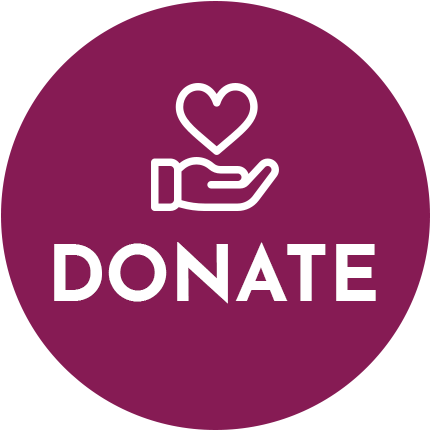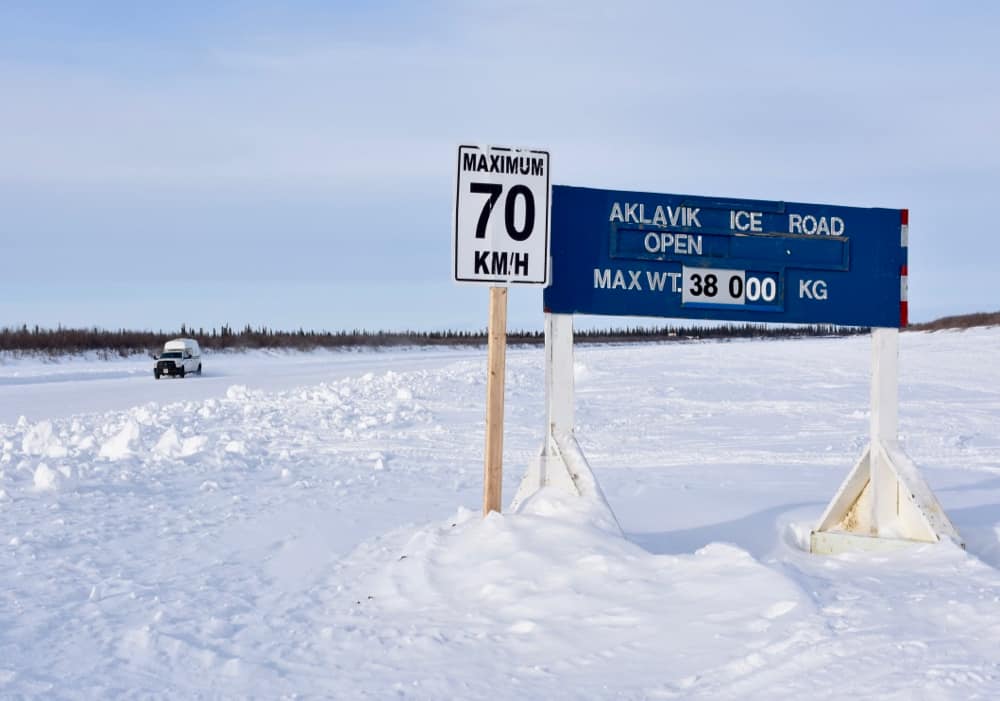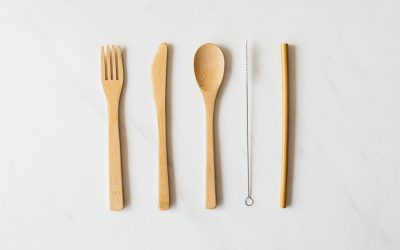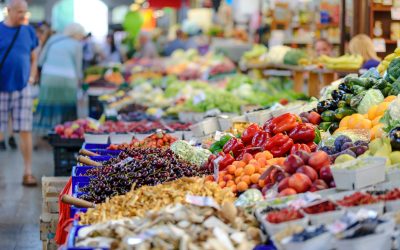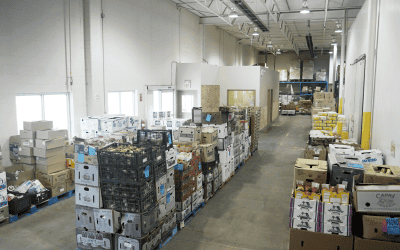When he saw the Buffalo airlines charter approaching the Aklavik airstrip, swaying and bobbing in the wind, Michael Greenland surely felt relief. Michael is the president of the Ehdiitat Gwich’in Council in Aklavik, Northwest Territories. He knew exactly what was on that plane: the first shipment of frozen and canned food sent from Second Harvest.
To put Aklavik into perspective, the hamlet is about as north as it gets in Arctic Canada. It’s 833 km north of Whitehorse, Yukon. It’s further north than a majority of Alaska, Iceland and parts of southern Greenland. Getting food to Canada’s communities in the Arctic Circle is a challenge at best. It’s a glorious day when it arrives.
That plane, a Buffalo Airways DC3, had a long flight that day. The food on it travelled even further: first loaded onto a truck in Edmonton and trucked into the Northwest Territories several days before that charter flight landed its wheels on the snowy airstrip in this isolated northern community. Planes of this size are rarely seen arriving into this small community, perhaps once or twice a year according to Michael, and the locals likely knew something was up.
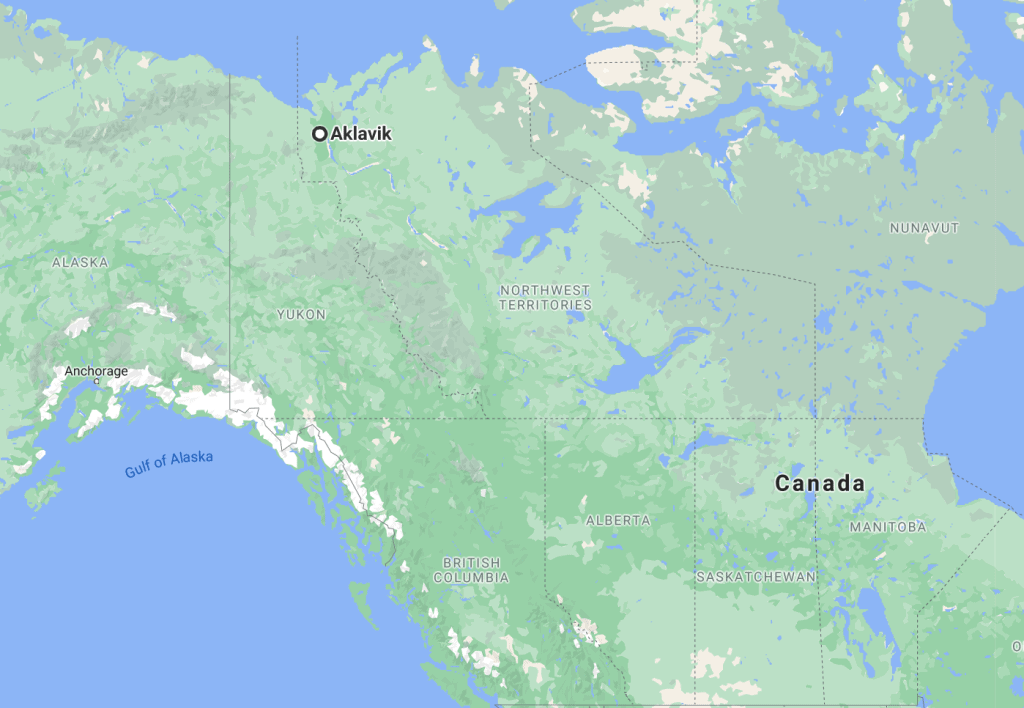
The hamlet of Aklavik is home to approximately 600 people – mostly Gwich’in, Metis and Inuvialuit (Western Canadian Inuit). Roughly translated as “Barrenground Grizzly”, Aklavik is located above the Arctic Circle and was first established as a fur trading post by the Hudson’s Bay Company in the early 20th century.
The first contact between Second Harvest and the GTC in Aklavik first took place in early October 2020. Debbie Greenland, the GTC Executive Director, worked with Second Harvest on the logistics of receiving the large shipments of turkey breasts, chicken drumsticks, fries, canned salmon and eggs. The food would need to be transported on pallets and ultimately distributed to the entire community.
Living Off of the Land in Remote Northern Canada
When many of the white settlers abandoned Aklavik in the 1950s when the government moved the regional centre to Inuvik, roughly 100 kilometres to the east (it was on higher, drier ground) many indigenous families opted to stay put and continue traditional hunting on the familiar lands for their primary food source.
The “Never Say Die” message covers the Aklavik coat of arms today, representing resilience and community. Some of the houses are raised off the ground on stilts to ward off the risk of flooding of the Peel Channel and so that the warmth of the home doesn’t add to the premature melt of permafrost.
It is set amongst extraordinary landscapes which represent the splendour of the Canadian North.
But the remote community is struggling with food shortage and Michael knew of the importance of the shipment within that airplane and the next one which would arrive two days later, on Halloween night in 2020.
According to Michael, the Gwich’in tribal council in Inuvik was first contacted by the food rescue program in Ottawa and the process was put in motion.
“The first plane came in with nine pallets full of food,” Michael explained. “I have a small [front] loader and so I unloaded the plane onto a truck a trailer and got it all set up.”
Michael and local volunteers then divided up the food and distributed directly to the participants of the program, door to door. After the initial distribution they realized more food remained. “We opened it up to the rest of the community, other aboriginal groups and non-aboriginal, basically everyone in town ended up with an equal share.”
“We put a message out on social media saying ‘come one, come all and pick up’ … and they did,” he said. “Vehicles just started coming and the thank yous and praises we received were just awesome.”
The communities in this part of Canada are accessible mostly by ice roads, an incredible crack-ridden and marbled icy network of roads across the Mackenzie River Delta, crucial to connecting the local communities and accessing Aklavik. It was a mild early winter with a number of vehicles falling through the ice, according to the Department of Environment and Natural Resources. The Aklavik ice road officially opened on Christmas day.
For the Aklavik community, the food shipments made a tremendously positive impact.
“We fed all of Aklavik for a couple of weeks for sure, if that’s all the food they had, and for some people for a couple of months,” he said. “It was a lot of food, and good food as well. The fries were really good, we got a lot of feedback about how good the fries were.”
Read more stories of food rescue and deliveries to Canada’s remote northern communities.







The ice road from Inuvik to Aklavik on the MacKenzie River (East Branch). credit: Mady MacDonald / Shutterstock

